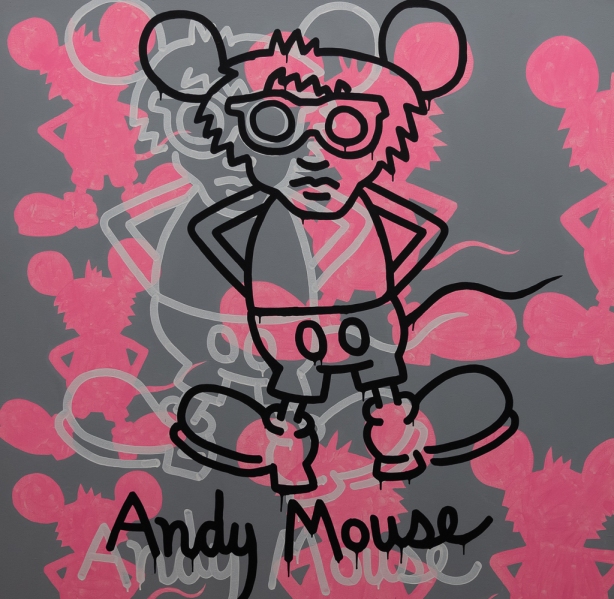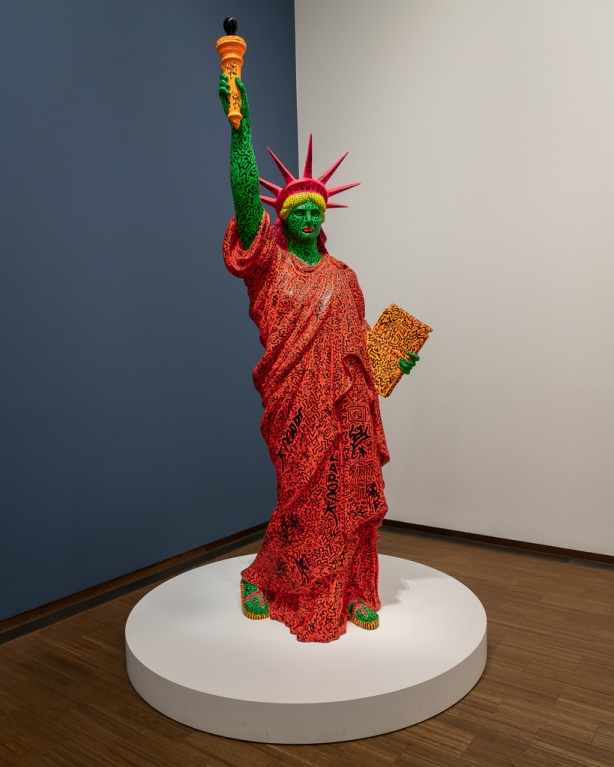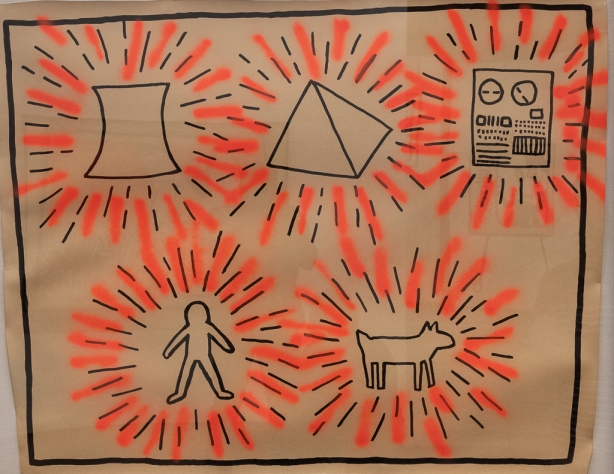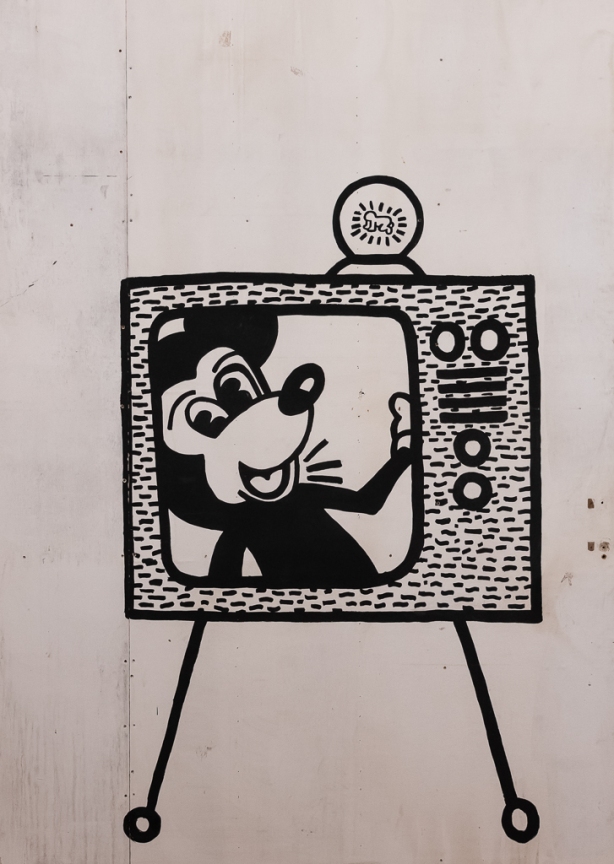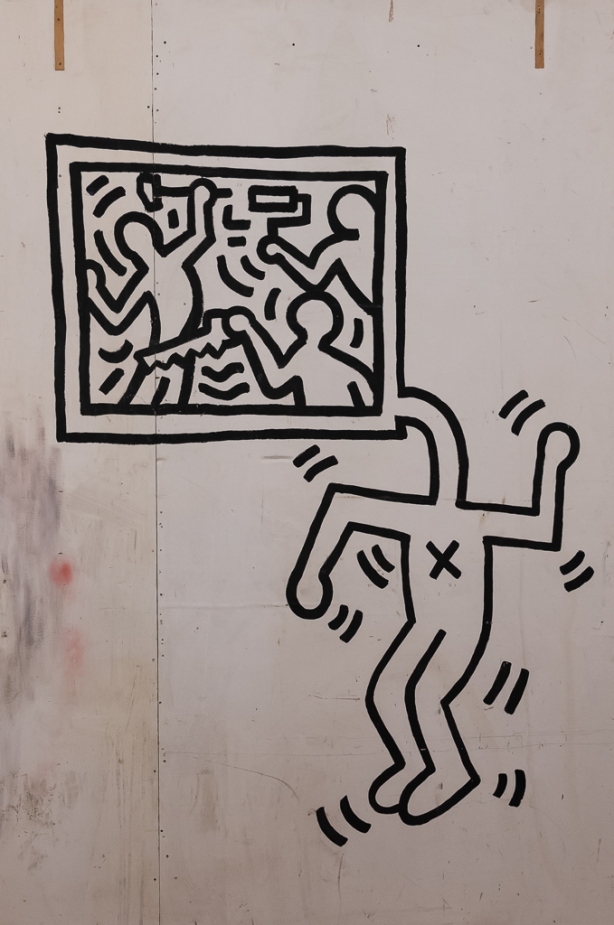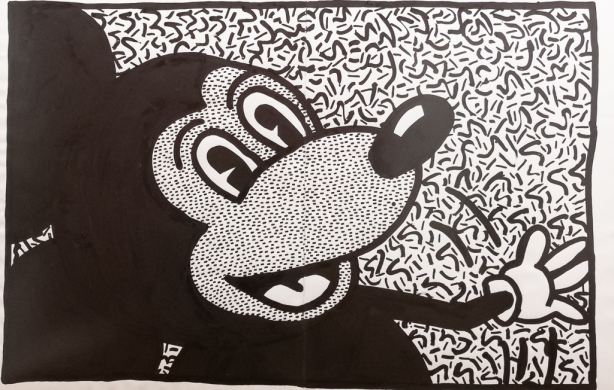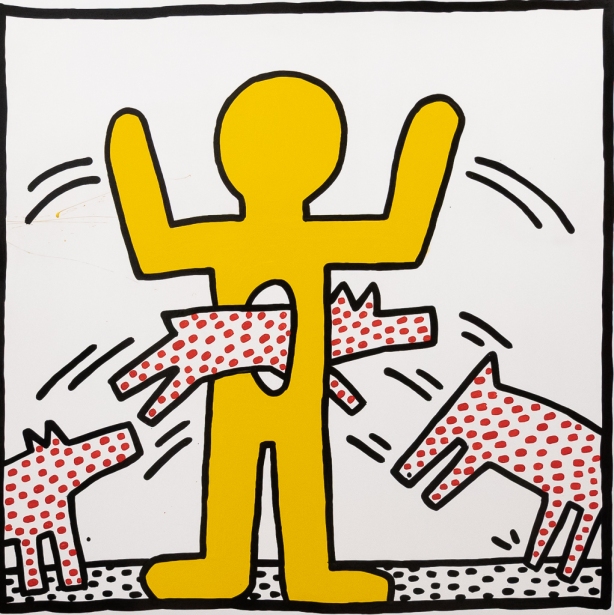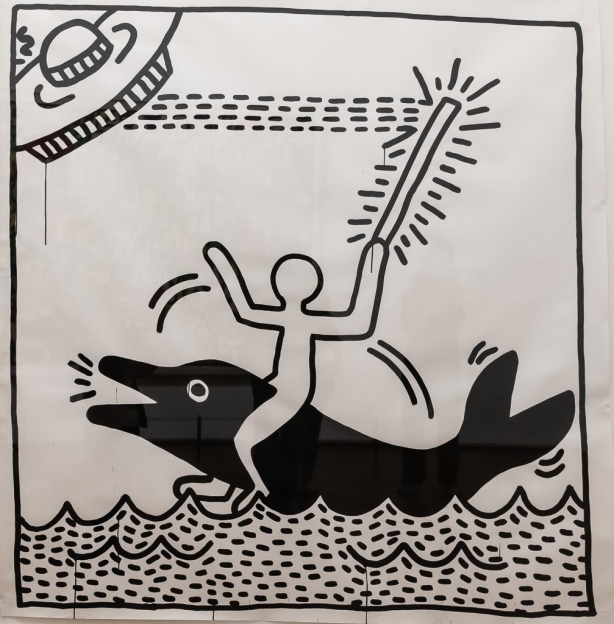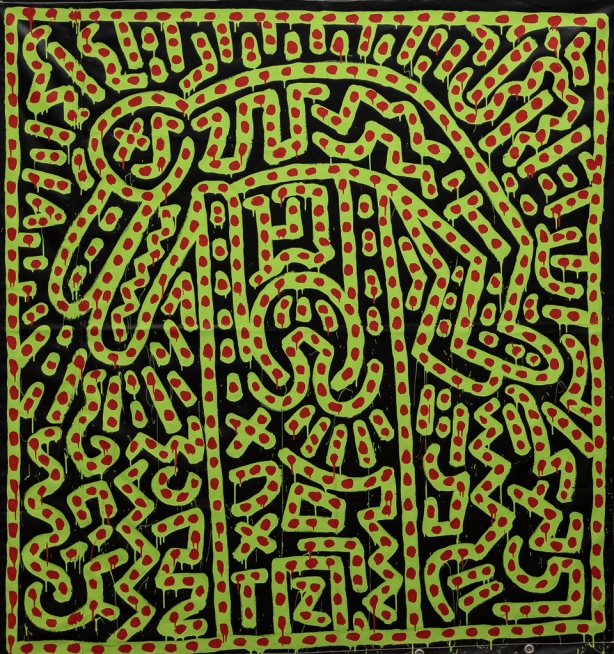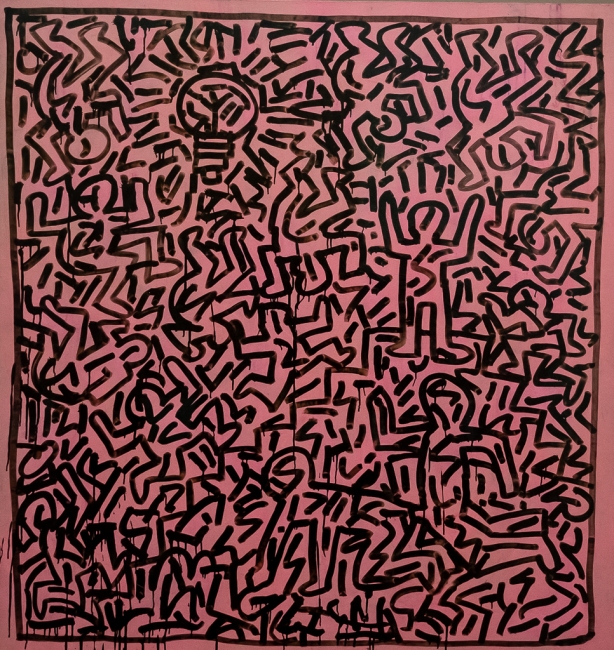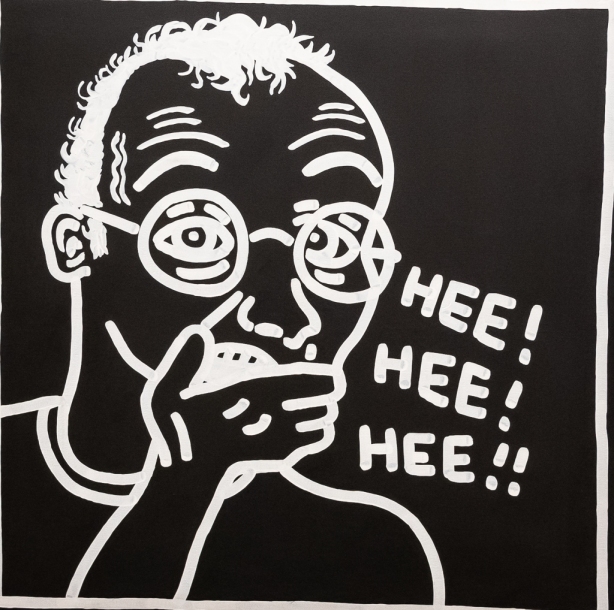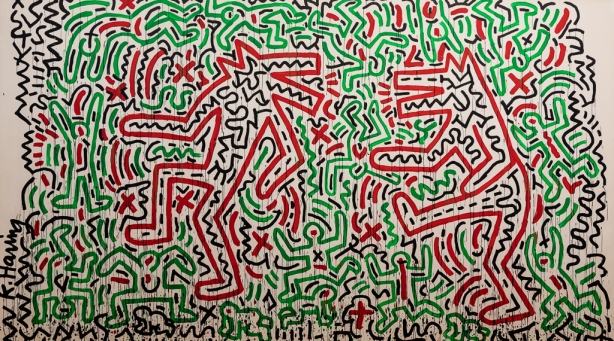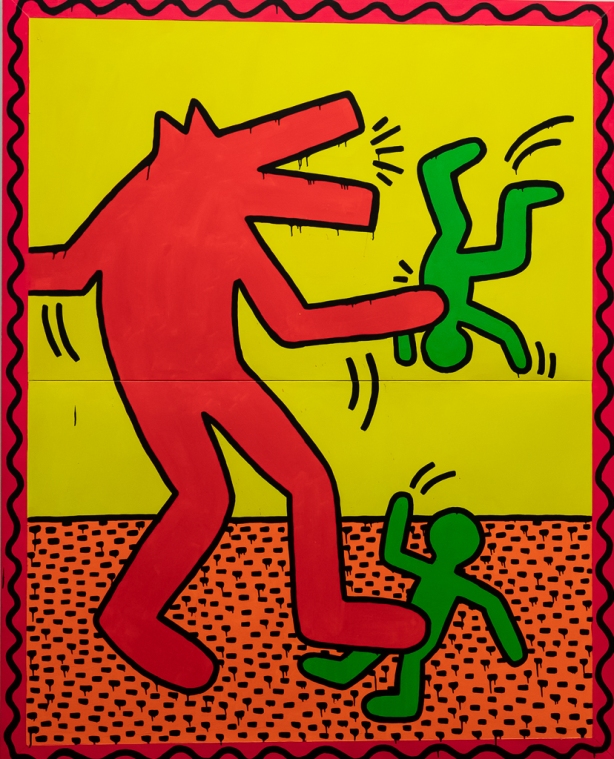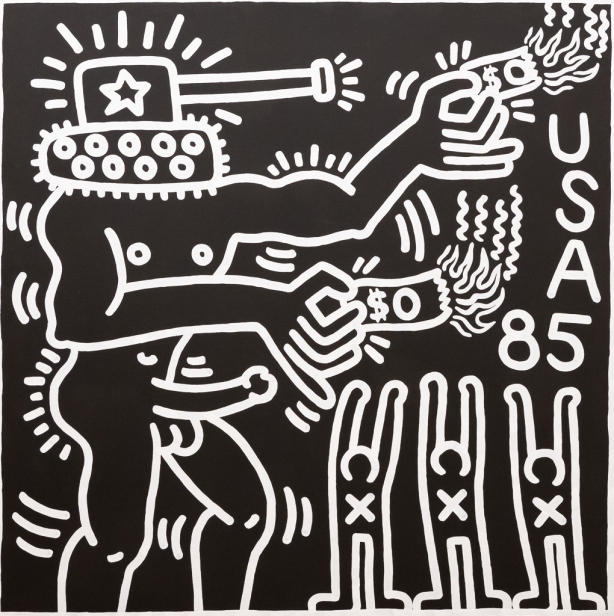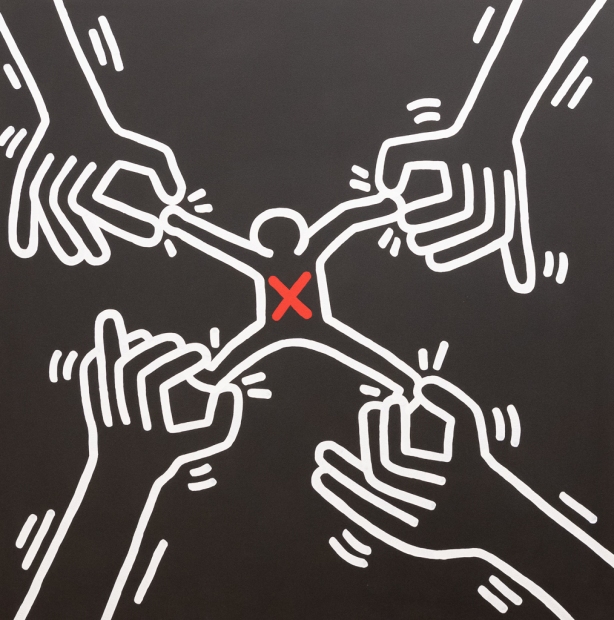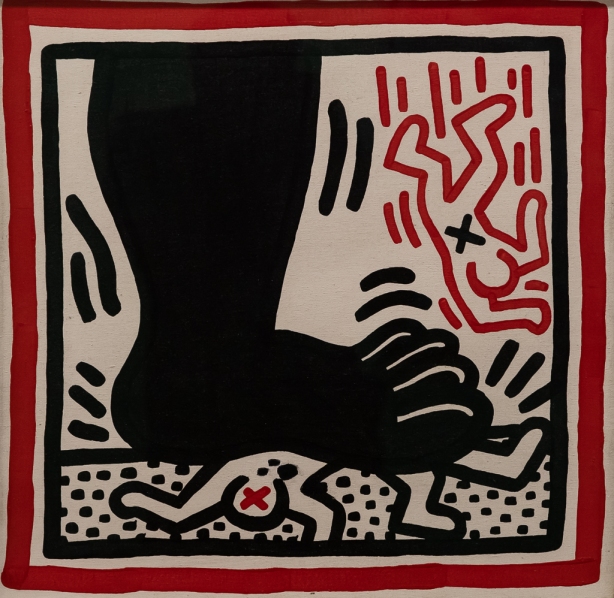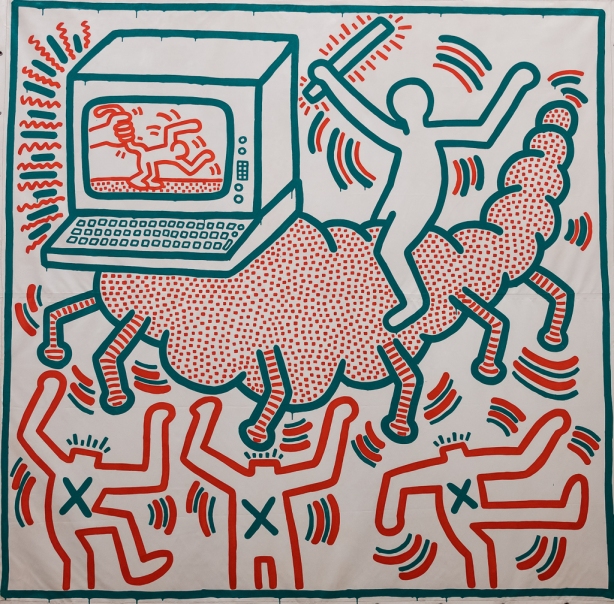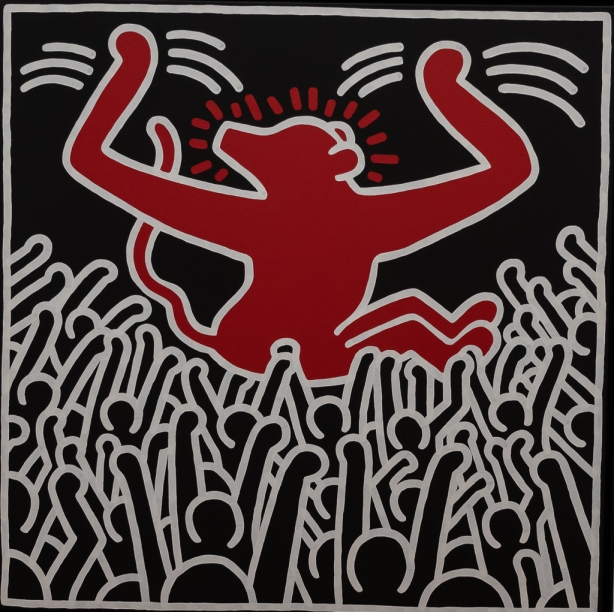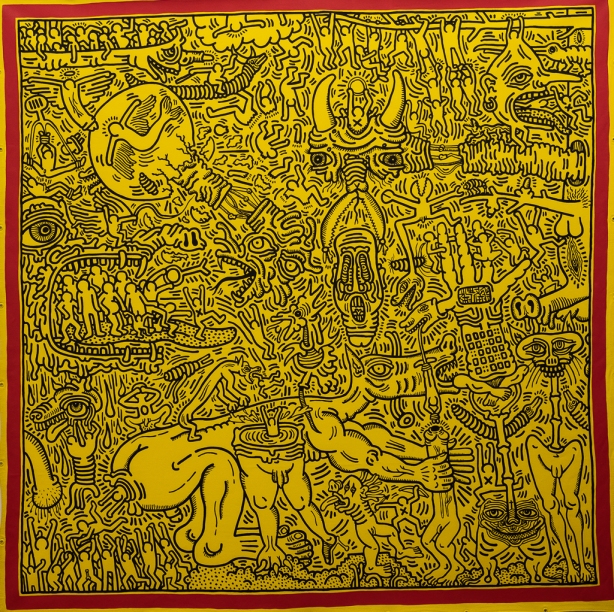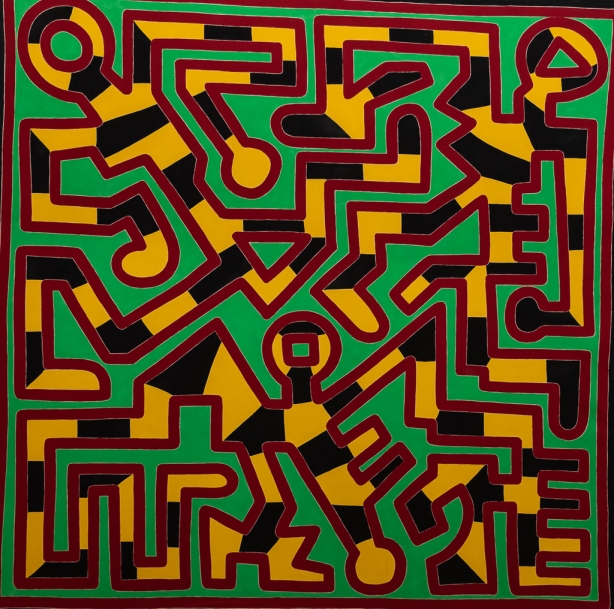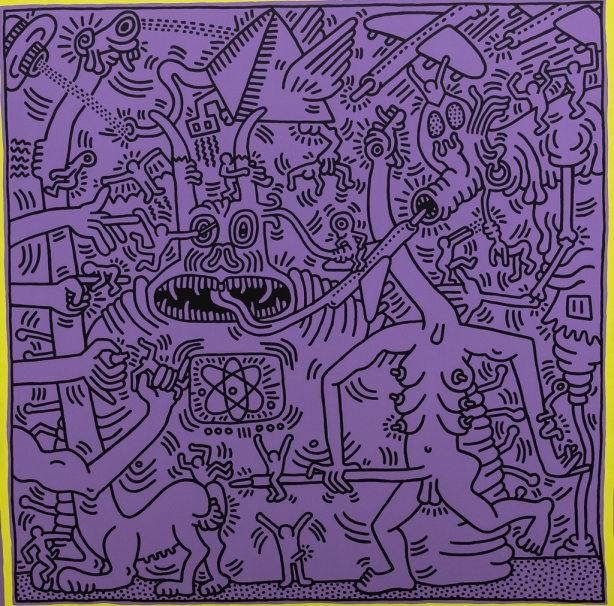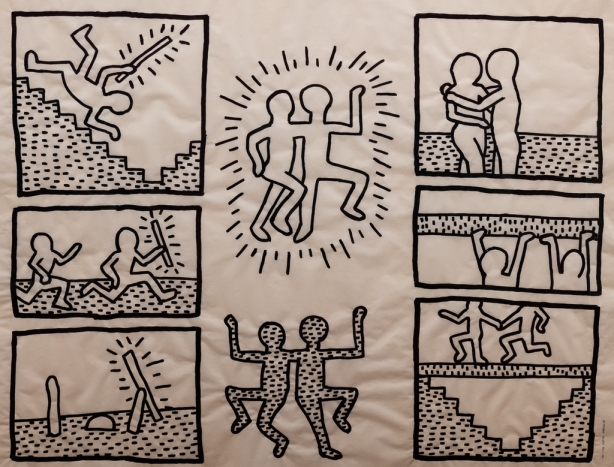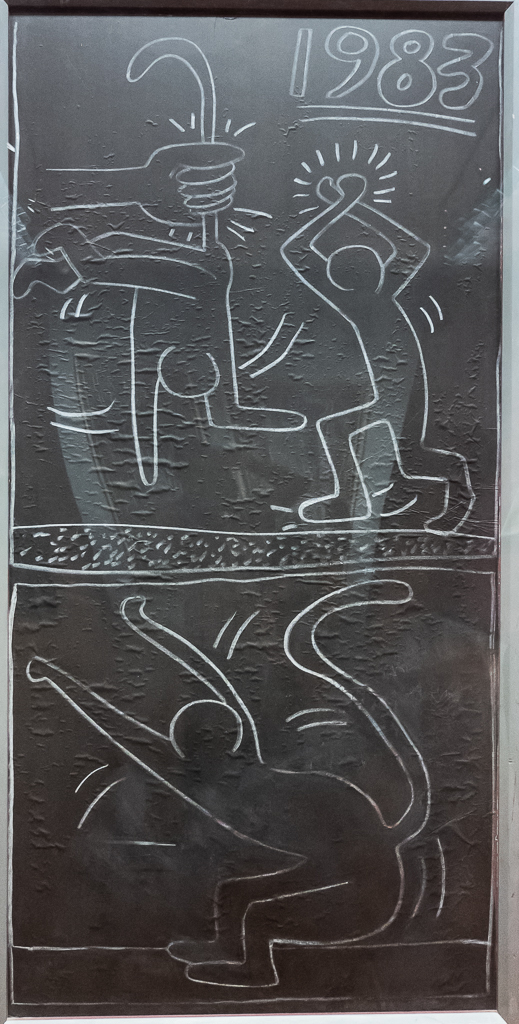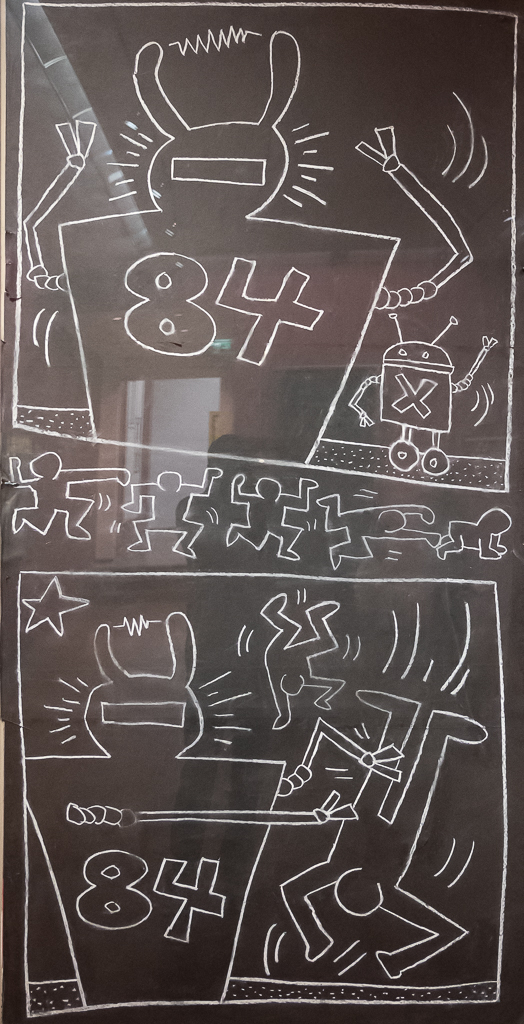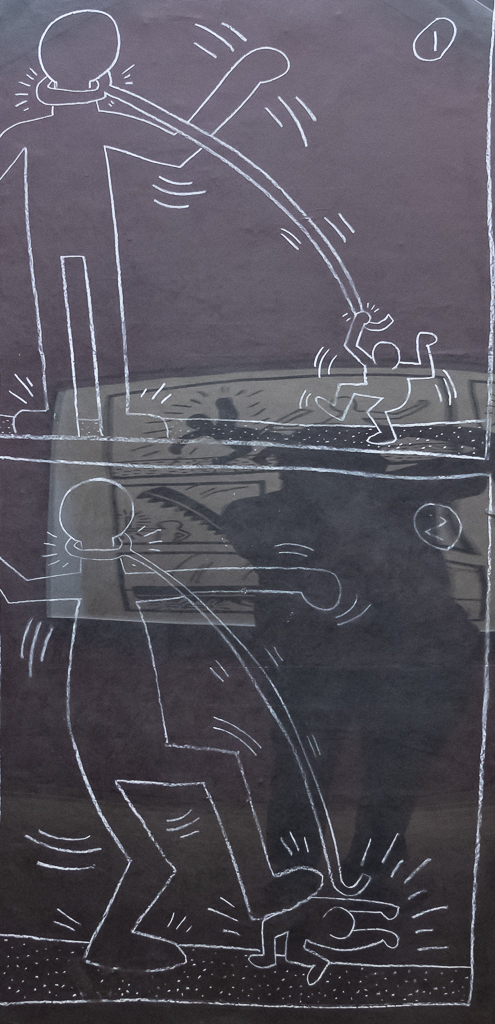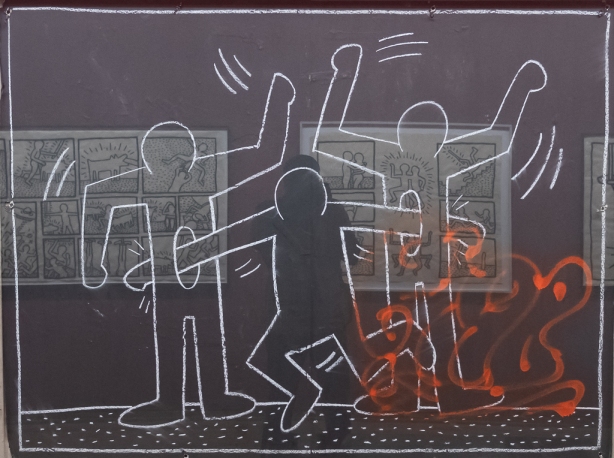At the Albertina Museum in Vienna, I came across an exhibition of the works of an artist, whom I had not heard of earlier. Of course, that only points to my lack of familiarity with the art world and Keith Haring – the artist featured – is pretty famous for his work. The show was titled “Alphabet” and it was so named as Haring had developed a pictorial “alphabet” for his work. He was of the view that art is for the public and wanted everyone to understand what he was drawing about. For him, art was a political activity and that was very evident from his work.
Haring was born in Pennsylvania in 1958 and lived but a short time before his death in 1990 from AIDS related complications. Yet, within these 32 years, he achieved great fame as an artist and produced a huge number of drawings and paintings. He had his first solo exhibition when he was just 20 and had more than 500 exhibitions between 1982 and 1989.
He was always bothered about the treatment meted out to minorities and people who were “different” – he himself was gay – and his work reflected this. He was a bit ambivalent in his approach towards money and did not like the idea of making art so that they could be hung in galleries with the viewership limited to a few; however, he considered it important to earn enough money as well. He was very critical of capitalism and its impact and was well aware of its connection to racism and suppression. War horrified him and he was also against nuclear reactors as he was aware of the horrors of the Three Mile nuclear accident, which occurred near his hometown in 1979.
Legendary artist Andy Warhol was a close friend of Haring’s and he considered Warhol as someone who had beaten capitalism at its own game. Yet, he also considered Warhol as the consummate form of the artist as a businessman and that was not a position he appreciated. Haring tried to move away from being an artist for the elite and wanted to create art for the public. Mickey Mouse was one of Haring’s oft used motifs and his ambivalent position towards Andy Warhol might have been the reason for this painting.
At times, he collaborated with other artists and one of the first pieces in the exhibition was a miniature Statue of Liberty which he had made in collaboration with the artist LA-II (Angel Oritz). This work is considered to be Haring’s criticism of the American promise of equal opportunity for all – take note of the black bulb instead of the torch.
There were about 100 works in the exhibition and good many of those are reproduced in these pages.
He tried to develop his own pictorial language, which he wanted everyone to understand. He borrowed some of the common motifs like the Egyptian god Anubis and the Golden Calf. He also developed his own symbols like the dog, the radiant baby etc. The meaning of these symbols depended on the context in which they appeared. For instance, the dog could be a symbol of justice or protector but could also be an attacker. In his own words: “The dogs really were representational of human and animal. In different combinations they were about the difference between human power and the power of animal instinct. It all came back to the ideas I learned from semiotics and the stuff from William S Burroughs – different juxtapositions would make different meanings.” In the image below, we see the dog attacking a street artist and there is blood all around.
The Golden Calf is generally understood to represent idol worship and Haring used it to show mass hysteria and manipulation. I felt that Haring might have had a field day as an artist if he were to live in present day India.
He borrowed the happy Porky Pig from Looney Tunes and used it as a reference to consumerist society and the growing alienation from nature. In 1978, he wrote alongside a drawing: “Everyone knows where meat comes from, it comes from the store”.
The flying saucer was a symbol that Haring used to depict the other – those outside the “normal” contours of the society – and he considered that these others could strengthen and empower people and society.
He tried to communicate through imagery that could be more easily understood and produced a huge amount of drawings. He drew on paper, plastic sheets, tarpaulins; anything that he could lay his hands on. Most of it was about celebrating life, empathizing with the sidelined and the marginalized, protesting against oppression, consumerism, mass culture etc. Good many of this was in the public space, on walls etc.
In 1980, John Lennon was shot dead and Haring responded to Lennon’s death with the image of a man with a hole in the middle. In Haring’s own words: “Actually, this image of a man with a hole in his stomach came after I heard of John Lennon’s assassination…I woke up the next morning with this image in my head…and I always associated that image with the death of John Lennon”. This image may also be taken to symbolize the emptiness within modern man.
In his early days, he also tried the abstract language as shown in the painting below.
However, he soon abandoned this because: “The abstract paintings would not make any sense if they were painted in public space. It was first when I started to draw images which could be read as signs that I went into public space. Because these paintings made sense in the streets – all people, all languages could read them. After studying the theory of communication, information and drawing and how meaning speaks through signs and how this language – because that is what it is – works – I chose a primitive code.”
The radiant baby was another of Haring’s most used symbols. He considered babies were always connected with positivity. He said: “Babies represent the possibility of the future, the understanding of perfection, how perfect we could be. There is nothing negative about a baby, ever. The reason that the ‘baby’ has become my logo or signature it is the purest and most positive experience of human existence.” This statement immediately brought to my mind a passage I had read in the autobiography of Elie Wiesel titled “Night”. Wiesel was a survivor of Auschwitz and in the book he talks about how he witnessed live babies being thrown into fire by the Nazis, at the concentration camp. The contrast between how artists like Haring viewed and valued human life and how the fanaticism makes one such values was a telling point.
A light bulb as a motif for ideas.
Torture
A self-portrait
Haring was against organized religion and in his work, crosses were used by people to commit to murder or people lost their lives on them. “You can only help and encourage people to live for themselves. The most evil people are the people who pretend to have answers. The fundamentalist Christians, all dogmatic ‘control religions’ are evil. The original ideas are good. But they are so convoluted and changed that only a skeleton of good intentions is left.”
This painting has a mistake which turned out to be a major hit. When Haring was painting this on a wall, he made a mistake in painting the first eye too far to one side and realized that he was going to be left with a lot of unexplainable empty space. To get over the problem, he painted a third eye – his only intention was to fill up the space. He was later amused to hear about people interpreting the third eye as Haring’s allusion to surveillance, consciousness etc. He had meant nothing of the sort – a classic case of a work going beyond the creator once he or she was done with it.
In addition to the barking and the biting dog, Haring also used a form like that of Anubis. According to Egyptian mythology, Anubis (the dog-headed god) was entrusted with weighing of the heart during the judgment of the dead; thus controlling the fate of the dead person. Here is an image which alludes to the dance of death and how everyone is equal before death.
Haring considered his work to be political. He says: “Most of my political concerns and social concerns came from my life experiences. Partly being born in the late 1950s and growing up in the 60s and sort of being around that counter culture but not being able to participate. Definitely being very affected by that and being at an age at the time when I think I was most impressionable, like seeing the Vietnam War when I was ten years old, seeing race riots in television and reading Life magazine.”
Sometimes, human shapes are depicted with dotted bodies. This can indicate otherness – skin colour, homosexuality, illness such as AIDS etc.
For this painting, I found the note provided by the curator to be quite interesting. “The caterpillar is the actual feeding stage of the butterfly and has to shed its skin several times before achieving its final size. Only after metamorphosis does it transform into the butterfly, whose beauty solely serves the purpose of procreation and the fades. In Haring’s art the caterpillar thus stands for both transformation and metamorphosis and for greed and a craving for food, which is why in some of his works it is depicted as a monster. With a computer replacing its head, the caterpillar turns into a technological ogre. In Haring’s art computers and robots describe the prevalent fear of new technologies, the space age, Silicon Valley, and the potential control of machines over humans. As early as 1978 Haring gave much thought to the subject of computers and to what they mean for our daily lives: “The silicon computer chip has become the new life form. Eventually the only worth of man will be to service and serve the computer. Are we there? In a lot of ways we are.””. To me, it was amazing that he had thought of this man-machine conflict so long back.
The Golden Calf is replaced with the red monkey to warn about mass infatuation and hysteria.
Towards the end of his life, Haring was sure he was going to contract AIDS as several of his partners had died because of the disease. His art also reflected this preoccupation and danger of the monster.
In this work, a deadly monster is shown as grabbing its victims while offering its orifices in deadly invitation.
Between 1980 and 1985, Keith Haring started making drawing on the unused billboards in the subway. Such advertisement boards were covered with black paper and he drew with chalk on the black paper. He is believed to have made between 5,000 to 10,000 such drawings but most of these have been lost. This was an illegal activity and was he would have been arrested if caught making the drawing and so he had to work very quickly to avoid getting caught. He considered this as the perfect laboratory for him to experiment on the ideas he was thinking of. Soon, the public started noticing these drawings and started to carry them home as collectibles. This prompted Haring to stop this activity as he wanted his work to be with the public, and be accessible to them, than be in collections.
I have generally not been to appreciate this type of art, which looks quite undeveloped and primitive, almost like a child’s drawing. Yet, Keith Haring captivated me; maybe because of his stance and politics in his works, maybe because of what I could sense of him as an individual by seeing his art; maybe I was amazed that such type of art could earn such international acclaim in such a short time. I am not sure, but the fact remains that I spent a good amount of time looking at his work and felt good to know of Keith Haring, his life and art.
